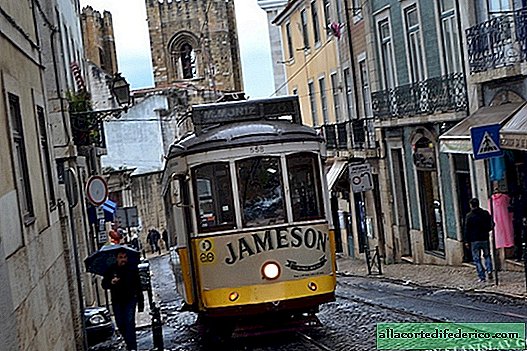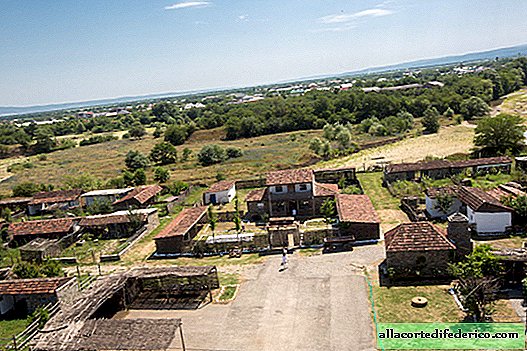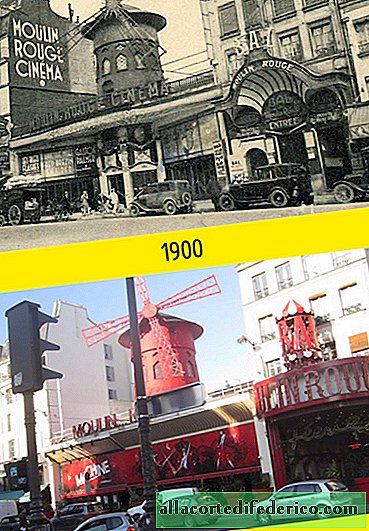Lisbon Trams - World Famous and Deadly
Lisbon is inconceivable without one of its main attractions - historical trams. It is unlikely that there will be people who have been to Lisbon and would not have photographed these lovely antediluvian vehicles at least once. They really brighten up this city and are deservedly considered its hallmark.
And you must - such a nuisance! Just about a week ago, one of these same trams of the 28th most popular route among tourists flew off the rails at full speed, rolled over and crashed into a corner of the house, folding up like a cardboard house. Almost 30 people were injured.
"How could this happen?" - someone will ask. A little over a year ago, I was in Lisbon, riding these trams, and I’ll say honestly: “I am absolutely not surprised! Moreover, this was bound to happen!”
And that's why!


It must be admitted right away that Lisbon trams, in spite of all their external attractiveness, are a terribly inconvenient vehicle that has long been outdated. Most of them were built between 1936 and 1947. Their last thorough renovation happened already in 1995, and then only new power plants were installed and braking systems were replaced. Since then, they have only occasionally been repainted.

In total, at present, 45 such trams are mercilessly operated in Lisbon on 6 city routes. Each newly arrived guest of the capital of Portugal can appreciate their amenities.

Personally, we could not stupidly get into the first few trams. Tourists and townspeople stuff there like a herring in a barrel, and for the sake of this dubious pleasure they line up in long lines.

Smarter and more advanced trams board the seats at the very beginning of the route and enjoy the views of the city during the whole trip without any problems. And they go most often to the very last stop, so do not wait for the seat to be vacant during the trip.

But all the other passengers travel in terrible conditions. These leather belts with handles hang from tram ceilings. It’s just right to strangle them, and not try to maintain balance during steep climbs and sharp turns. Accordingly, the whole crowd in the aisles hangs around the entire tram, not greatly contributing to its balance.

Apparently, historical trams often break, even during our trip it happened. And what to want! Just look at the driver’s dashboard to understand the fragility and imperfection of the historic Lisbon tram.

The fare costs 1.45 euros if you use a pre-purchased city transport card, and twice as expensive if you pay for the trip with the driver. For this price, in a crowded stuffy tram, you can, of course, try to feel the authenticity and try to see something there behind the glass, standing, or rather hanging, right on the go.

Only it will turn out only for very unpretentious, or extremely dodgy tourists. The rest, except for those who took all the seats in advance, will probably spit after such a trip and will prefer to photograph these vehicles externally rather than internally. They look on the go from the side, and they are really great. Moreover, they walk along the most beautiful streets in the historic city center and in the Alfama area.

By the way, in addition to simple working trams, there are also sightseeing ones. Prices there are completely different, but the level of comfort is completely different!

It is worth recalling a little the tram history of the main city of Portugal. He appeared here back in 1873. Then it was the so-called horse-drawn horseback riding trails.

They were called Carro Americano in those days, and this name is not accidental. These wagons on rails appeared precisely in the USA (in New York in 1832), from where they began their victorious march around the world.

In 1901, the first electric tram, the so-called Carro Electro, began to run in Lisbon. For decades, the tram has become the main vehicle in Lisbon.

Its popularity decreased only with the construction of the subway. But even the subway could not lead to the most interesting historical areas of the city. So nowadays the tram in Lisbon remains unrivaled. And how much he has done in the field of increasing the tourist attractiveness of the capital!

There are more modern Siemens trams in the city, but they are of little interest to tourists. So the old Carros Electros are unlikely to soon disappear from the streets of Lisbon.

If only the city authorities thought about their safe and convenient operation, otherwise they would not want the trip on the Lisbon tram to turn into a deadly attraction with unforeseen consequences.


















